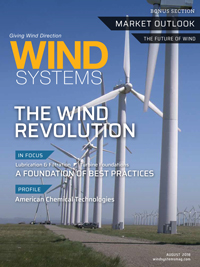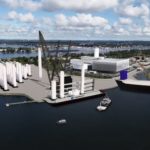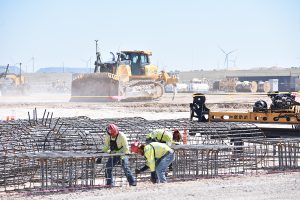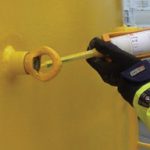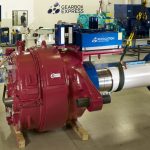U.S. production tax credits (PTCs) have accelerated wind repowering activity as operators look to use technology advancements to optimize aging fleets. Falling costs and growing wholesale market exposure have pressured margins for suppliers and operators.
Most recently, PacifiCorp ordered 260 MW of turbines from Vestas to repower the Marengo 1 & 2 wind farms in Washington. The Marengo wind farms were built in 2007 and 2008, and the turbines will be upgraded from 1.8 MW models to more advanced 2.0 MW units from the second quarter of 2019, Vestas said June 29.
Repowering allows operators to install larger, more efficient turbines and introduce operations and maintenance (O&M) improvements.
Operators may choose to perform a “full repowering” of major wind farm infrastructure or a “partial repowering” where typically the existing tower and foundations are kept in place.
About 2.1 GW of U.S. online wind capacity were repowered in 2017 and more than 15 GW of capacity is “ripe” for repowering in 2018, ICF consultancy said in a report published in May. Repowering could add 300 MW of additional U.S. wind capacity in 2017-2022, according to Bloomberg New Energy Finance (BNEF).
Projects installed between 2003 and 2010, underperforming plants and those with high maintenance costs are likely candidates for partial repowering, ICF said. Similarly, turbines from suppliers no longer in business can be swapped out under a repowering program.
Extended in 2016, the PTC support program provides 10 years of tax credits at $23/MWh for greenfield and repowering projects started in 2016. The PTC drops by 20 percent for projects started in 2017 and is scaled down by 20 percent annually with zero support from 2020. This means projects started in 2018 can capture $13.8/MWh of credits.
Partial repowering projects in 2018 can earn an Internal Rate of Return (IRR) after tax of 11 percent, according to ICF. This is based on a captured energy price of $24/MWh (flat) and capital expenditure of $950/kW.
Even with the reduced PTC level this year, “repowering can make economic sense,” ICF said. But ICF warned falling margins demand more careful scrutiny of energy output gains, capital costs and O&M efficiency.
“It may make better financial sense this year than it will next year or the year after,” said Chris Mertes, ICF’s Wind Practice Lead and co-author of the report.
Repowering strategies
ICF’s indicative IRR calculation is based on an increased net capacity factor and a 10-year extension of asset life.
Energy production gains are clearly a crucial driver of repowering economics. According to the consultancy, a 1 percent increase in capacity factor can increase IRR by 0.8 percent.
To qualify for the PTC, the value of the repowering project must be at least 80 percent of total plant value.
Partial repowering work can differ between projects, but longer blades are typically fitted, and it often involves the replacement of the entire rotor and the refurbishment of other parts of the wind turbine, such as the nacelle or hub, said Eric Soderlund, senior manager and structural engineer at Sargent & Lundy.
Some partial repowerings have focused primarily on generator replacement, Soderlund said.
“This is done to increase the wind turbine capacity … PTCs are received so long as the 80/20 rule is met,” he said.

In a recent report covering 23 U.S. repowering projects, partial repowering projects retained — at the very least — the existing wind turbine foundations, turbine tower,s and electrical balance of plant (BOP). Some of the projects reused yaw systems, nacelles, and generators, while replacing hubs, main shafts, main bearings, and gearboxes.
Market risk
The contracting of wind-energy supplies is evolving as costs fall and subsidies are removed. While some projects will benefit from long-term PPA contracts, many will be exposed to wholesale market prices that have been flattened by the U.S. shale gas boom.
The economics of repowering can be “feasible” if captured wholesale prices are in the mid-$20’s/MWh range, ICF said in its report.
A 1 percent change in wholesale prices can affect IRR by about 0.4 percent, based on the above project assumptions, it said.
Repowering projects have the advantage of actual historical site performance and market data, the ICF consultants noted.
Operations and maintenance
Repowering decisions must also factor in O&M costs over the lifetime of the project.
Aging turbines incur higher O&M costs, and the average turbine age in North America will rise from 5.5 years in 2015 to 11 years by 2025, IHS Markit said in a recent report.
U.S. O&M costs are forecast to rise from $45,000-$50,000/MW per year for turbines aged between five and 10 years, to about $50,000-$60,000/MW per year for turbines aged between 10 and 15 years, IHS Markit said.
According to ICF, O&M contracts for new projects currently range between $15,000 and $25,000 per MW per year.
“The O&M cost delta is a significant driver in the economics of a repower project: A $5/kW-yr difference in our base case makes for a difference in IRR of 1.4 percent,” the ICF consultants said.
Market competition also has spurred a widening choice of repowering “add-ons” that can further reduce costs over the lifetime of the asset.
Original equipment manufacturers (OEMs) are now offering repowering packages that include upgrades to main equipment as well as O&M, grid, and forecasting solutions.
In one example, GE supplied the turbines for Leeward’s Sweetwater 1 & 2 repowering project along with O&M services and tax equity financing through the GE Energy Financial Services arm.
“Repowering is so much more than simply providing new wind-turbine equipment,” Anne McEntee, GE Renewable Energy vice president and Services CEO, said in 2017. “We’re bringing the entirety of GE to the table for our customers, providing options for servicing, grid solutions, forecasting, and tailored financing solutions.”
More info: newenergyupdate.com
















